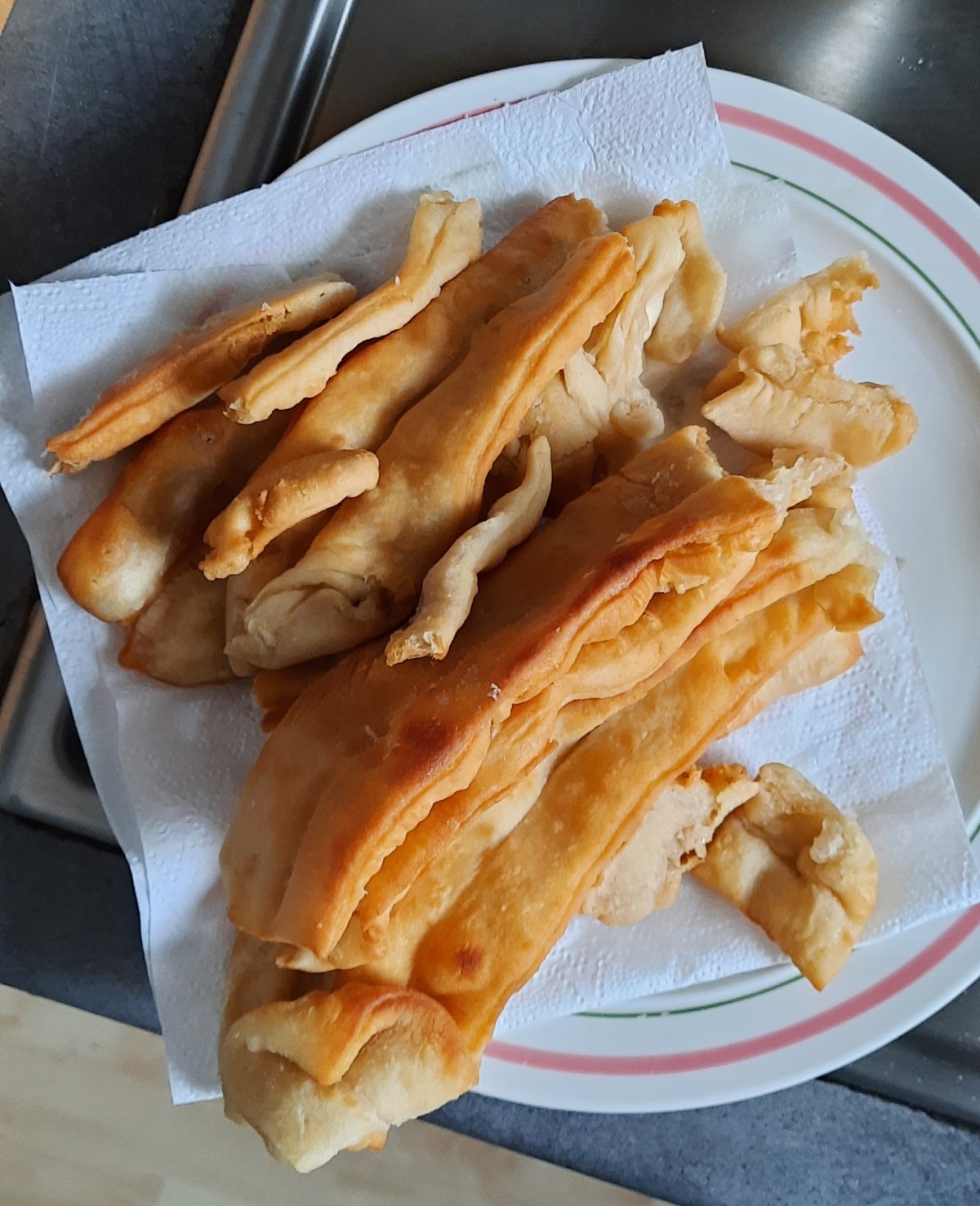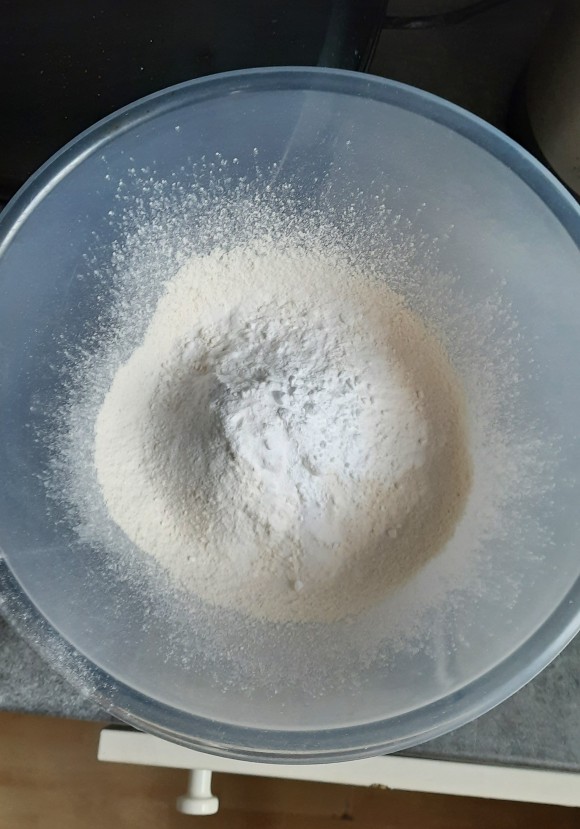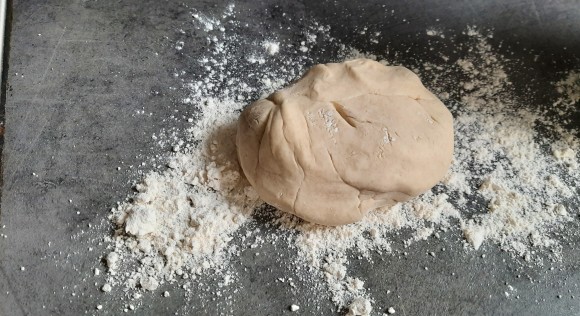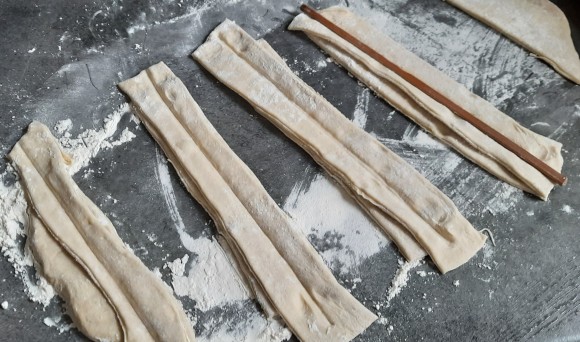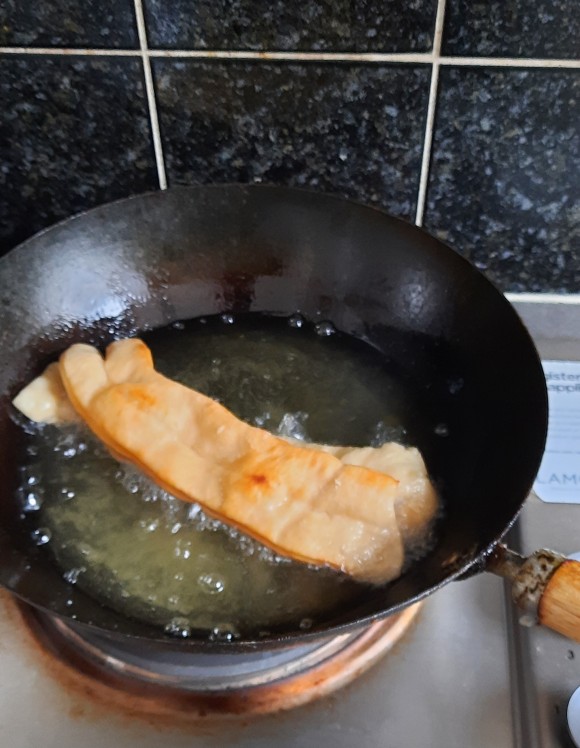
There may be wanton wontons and associated cheesy puns, but when it comes to the awkward-to-spell and even more awkward-to-pronounce ngor hiang, the possibilities are more complex. The Brits would call this dish a spring roll (don’t they call everything a spring roll?), while Northern Chinese friends swear they are a subset of dumplings from the ‘Motherland’. My Italian flatmate declares it an Asian cannelloni. Spanish foodies liken it to a cross between a wet sausage and a chorizo. I’m sticking with the sui generis label ngor hiang and its distinctly Southeast Asian / Singaporean origins.
Indeed – if there was one treat desperately missed from home (Singapore) that could never be located in any of London’s gourmet cornucopias, it was this meat roll that smelled of fish. Eeew – you say, but nothing invokes the sultry and sweaty aromas of a hawker centre one degree North of the equator better than shrimp-infused pork. Not to worry: there are other strands to the dish’s taste profile. Named after the Hokkien words for its key ingredient of five (ngor) spice (hiang – ‘fragrance’) powder, this roll was the crafty invention of Southern Chinese migrants who had moved to the ‘South Seas’ in the 19th century in search of work, opportunity… and – perhaps new palates? With a befuddling list of ingredients from dried prawns AND fresh prawns to – what I see as its USP: a specific kind of beancurd skin – plus a tedium-inducing five-step ‘desalinate-steam-freeze-defrost-deep fry’ process, it never occurred to me that homemade versions of ngor hiang were viable outside Singapore. Never mind wontons, this was a no-go-hiang.
COVID and travel restrictions, however, changed everything. Enter my fellow Singaporean-in-limbo friend Raiman Abdullah late last year, who not only surprised me at home one autumnal day with a takeaway tub of these very rolls, but had also presented them in a DIY halal update, substituting beef for pork. With zero access to Singapore’s hawker centres or Mum’s kitchen, desperate circumstances called for desperate measures. Raiman had decided to make ngor hiang himself.
They were orgasmic. And I decided I should learn to make them too.
I looked up wiki, google and YouTube for klutz-friendly recipes. Turns out, most references that surfaced had nothing to do Singapore at all. In the Philippines there was ngohiong also called kikiam, which substituted rice paper or egg crepe for crispy beancurd skin (but why??!). In Indonesia, Malaysia and Thailand there were sister versions called lorbak and heh gerng. I Whatsapped my Mum for her family recipe. And I grilled Raiman for his beef substituted Version 2.0.
Behold results below [substitutions in square brackets]. Enjoy!

Ingredients
Filling:
500g Minced pork – preferably mix of pork belly and regular pork [alternate: beef]
300g fresh shrimp
10g dried shrimp or dried scallops [optional]
6 shallots, finely diced
2 carrots [optional]
6 sprigs of spring onion, finely chopped
300g of drained water chestnut, finely diced [alternate: fresh apple]
Sauce seasoning:
1 tsp five spice powder
½ tsp white pepper
1 tsp sugar
2 tsp light soy sauce
2 tsp oyster sauce
½ tsp sesame oil [optional]
pinch of salt
1 egg
2 tbsp corn starch
Wrapping and Frying
1 large beancurd sheet, cut up into 4 A4 sized sheets
10g corn starch
oil for deep frying
Serving suggestion
fresh lettuce leaves
kicap manis / hoisin sauce / plum sauce/ chill sauce
Method
- Mix all ingredients for the seasoning and set aside.
- Mix seasoned sauce with all other ingredients for the filling in a large bowl, leave to marinate for 2 hours.
- Lay out beancurd skin on a clean surface. With a damp cloth, wipe away the salt on both sides of the skin. Cut skin into A4-sized sheets
- Spoon 4 heaped tbsps of the seasoned filling in a neat row near the bottom end of the beancurd skin. Tuck in sides and roll up, sealing the pack by applying water to edges of the beancurd skin. Repeat until all filling is used up.
- Place rolls in a steamer for 12 – 15 mins, set aside to rest for 10 mins when cooked. Freeze at this stage for future reference if need be – simply defrost for 10 mins before next step.
- Cut rolls up into cubes of 3 cm widths, coat individually with corn starch.
- Deep fry individual cubes, then set aside on oil-absorbing kitchen towels.
- Serve with fresh lettuce and choice of sauces.

Shzr Ee Tan is a Senior Lecturer and ethnomusicologist (with a specialism in Sinophone and Southeast Asian worlds) at Royal Holloway, University of London. She is interested in impact-based issues of music and decolonisation, aspirational cosmopolitanism, and race discourses in music scenes around the world (including HE), with a view towards understanding marginality through the lenses of intersectionality.

